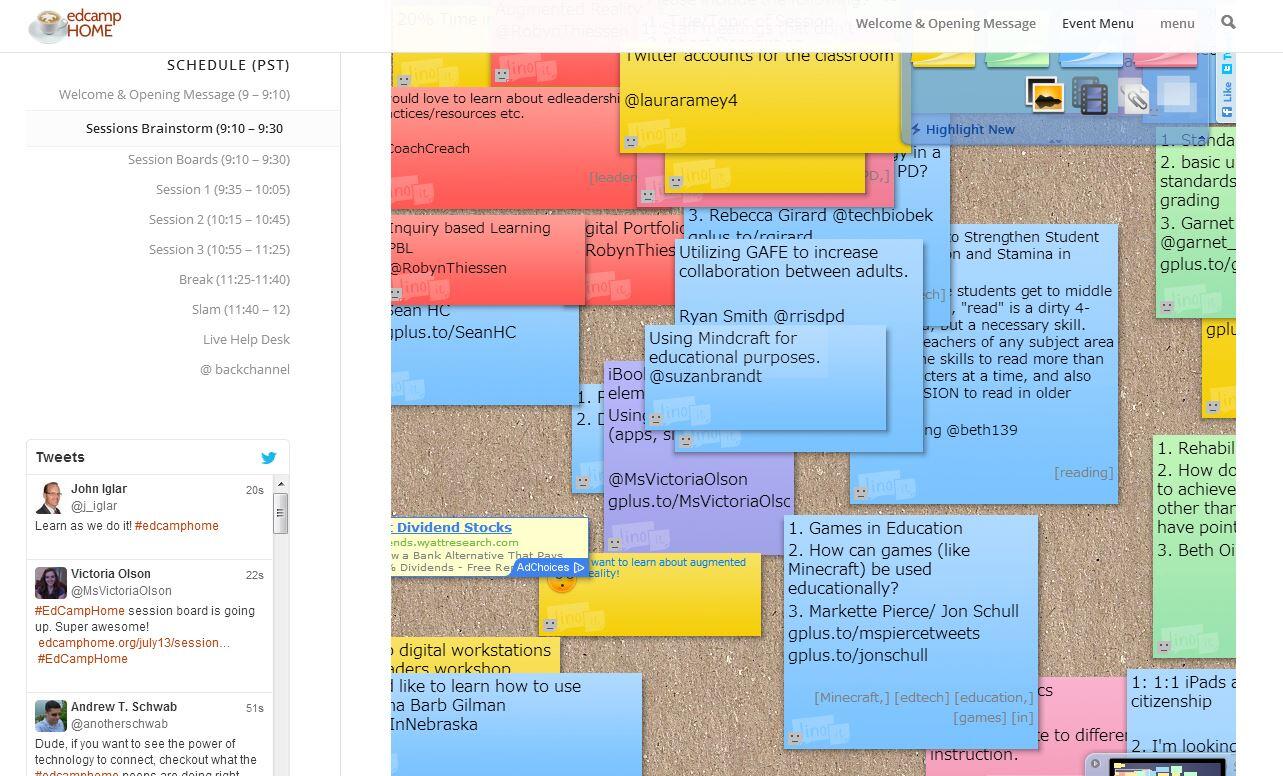The incredible organizers, +David Theriault , +Kelly Kermode , +Shawn White , and +Karl Lindgren-Streicher, deserve huge amounts of credit for planning and orchestrating this awesome experience. If you want to see an example of true collaboration, check out even a few minutes of their continuous live Google hangout during edcampHome:
After a few days of pondering over my response to this question, here's what I took away from the edcampHome experience:
Enthusiasm and passion are contagious.
So, find something you are excited about and talk it up with others. Your excitement, enthusiasm and passion will be evident in the way you talk, and you will soon have others interested and excited about it too.
As teachers, we know this to be true - we employ this strategy in our teaching, because we know that if we are passionate and excited about what we are teaching, we can (usually) get students excited about it as well.
But, when was the last time we experienced this paradigm of passion-based teaching and learning in professional development? That's the magic of edcamp. Teachers come together to share and discuss things they are passionate about. The enthusiasm catches on, and teaching and learning happen seamlessly through collaboration.
 |
| Image created by +Kevin Ashworth |
Here's the recorded broadcast of our session:
And here are some links to the augmented reality tools and resources we discussed:
- http://www.symbaloo.com/mix/augmentedreality2 (via +Charity Harbeck)
- AR is cool...so what? (blog post by +Charles Cooper)
- http://youtu.be/uHIxYpBW7sc (Teaching with Aurasma video via +Charles Cooper )
Collaboration requires communication, planning, investment from all sides, a bit of ad libbing, flexibility, and a good sense of humor.
As a teacher of English learners, a large part of what I do is collaborating with classroom teachers. It's not always easy, as many out there will attest. First of all, there never seems to be enough time in the day to communicate and plan as much as we'd like. And then, things change on a whim, and you and your co-teacher have to be flexible and come up with something on the fly. (Sometimes I feel this ad libbing is where my best teaching comes out!). And then, you have to be able to reflect together on how things went so that you can pick up where you left off (this is often where the sense of humor comes in handy).
Collaboration isn't always visible for others to see. They may see you planning together with your co-teacher, hear you talking about a great (or failed) lesson, or walk by and see you teaching together with your co-teacher. But rarely do others get to witness and take part in the inner workings of your collaboration.
--Enter edcampHome. Collaboration was the building block of the day. The edcampHome organizers were excellent examples of this. From the planning of the event, to the opening message, to scheduling sessions, to trouble-shooting and technical issues, they worked together and collaborated....and, their collaboration was visible to us all because it happened on their live broadcast of their Google hangout. It was awesome!
Not to mention the collaboration that happened among participants during the session brainstorming and in the sessions themselves....all of which was broadcast live and archived on YouTube and the edcampHome website. Check out the archived videos to see examples of collaboration in action!
 |
| Our session brainstorming board using Linoit board Image courtesy of +Kristina Campea https://twitter.com/TchEngRox/status/358623156237385728/photo/1 |
We are all experts.
Even if we don't think we are. Our questions, experiences, connections, and thoughts make us all experts on something. And sometimes, all it takes to reveal our inner expert is a meaningful conversation with others on a topic of interest. That, and the opportunity to share what we know in open and authentic ways, such as during an edcampHome session discussion on Twitter for professional development, 20% time, Google Apps, or Minecraft in Edu (check out the edcampHome website to see some of these discussions in action). There's something validating about sharing what you've tried in your classroom and hearing that others are interested in hearing more about how you did it or seeing how it could work for them.
The SLAM at the end of edcampHome was one more opportunity for people to share their learning and let their inner expert shine. It was pretty cool to see that many participants who signed up for the SLAM were actually first time edcampers who were fired up about the idea of brining edcamp back to their city or school.
I think the idea that we're all experts is a really powerful one to bring back to our students and staff. Why not let students SLAM (share) something they are really excited about during a designated time in class? Why not give time during staff meetings or PD for staff to SLAM some cool things they are doing in their classrooms (kudos to +Karla Juetten and +Laurie Toll for piloting this at our school last year!)? After all, sometimes we don't realize we're experts until we're given a chance to share.
EdcampHome was an amazing experience, and I loved being a part of it! I am looking forward to sharing some ideas from this edcamp with the edcampMSP team (coming up: Oct. 12, 2013 in MN). And, I am excited to see what the second iteration of edcampHome will bring!



